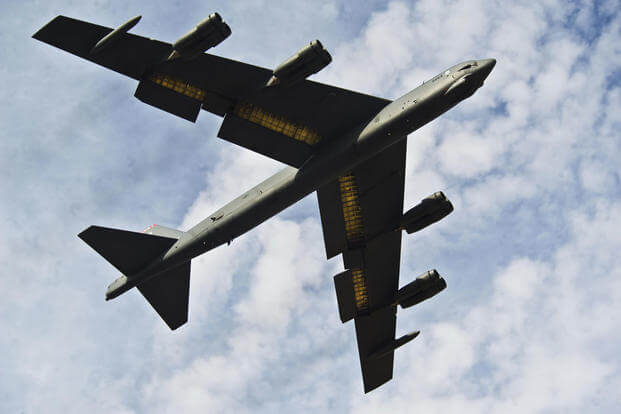The Pentagon on Wednesday called attention to the aging Air Force fleet that will U.S. commanders will depend on to play a dominant role in the air campaigns in Iraq and Syria against the Islamic State.
Defense Secretary Chuck Hagel was scheduled to deliver a keynote speech to the Air Force Association's Air & Space Conference Wednesday morning, but he had to cancel his appearance. President Obama ordered Hagel to meet with Gen. Lloyd Austin, head of U.S. Central Command, to discuss plans against the Islamic State.
In his place, Frank Kendall, the undersecretary of defense for acquisition, delivered Hagel's speech for him.
"We now have the oldest Air Force fleet in history," Kendall told the crowd reading off of Hagel's speech.
The current "rapidly aging fleet" was more than twice as old on average than it was in 1955, when the average age of an Air Force plane was 10 years, Kendall said. However, "the Air Force will play a central role in assuring our campaign's success" in Iraq and Syria, Kendall said reading from Hagel's speech.
A major factor in the aging of the fleet was the budget cuts imposed by the Congressional sequester process that has slowed the introduction of newer aircraft, according to Hagel's speech. The Air Force remains the "backbone of our military," but the future of the Air Force "is being tested by budget uncertainty," Kendall said.
The age of the Air Force fleet has been a constant refrain at the conference. Air Force Secretary Deborah Lee James called the fleet "ancient" in her remarks at the opening of the conference on Monday,
Picking up on James' remark, MacKenzie Eaglen, a military analyst with the American Enterprise Institute, said "it's not a stretch to say that almost all of the U.S. Air Force fleets are geriatric if not approaching ancient."
The bombers on average are more than 30 years old, Eaglen said, and the F-16 and F-15 fighters are 25 years old.
"All of the fighters have had service life extensions but we are stretching the fighters to the limits," Eaglen said.
The Pentagon also warned that Chinese and Russian pilots were now surpassing Air Force pilots in the number of training hours they fly annually, according to Hagel's speech. U.S. Air Force pilots were averaging 160 training hours per year while the Russian and Chinese pilots were flying about 200 training hours.
-- Richard Sisk can be reached at richard.sisk@monster.com




























